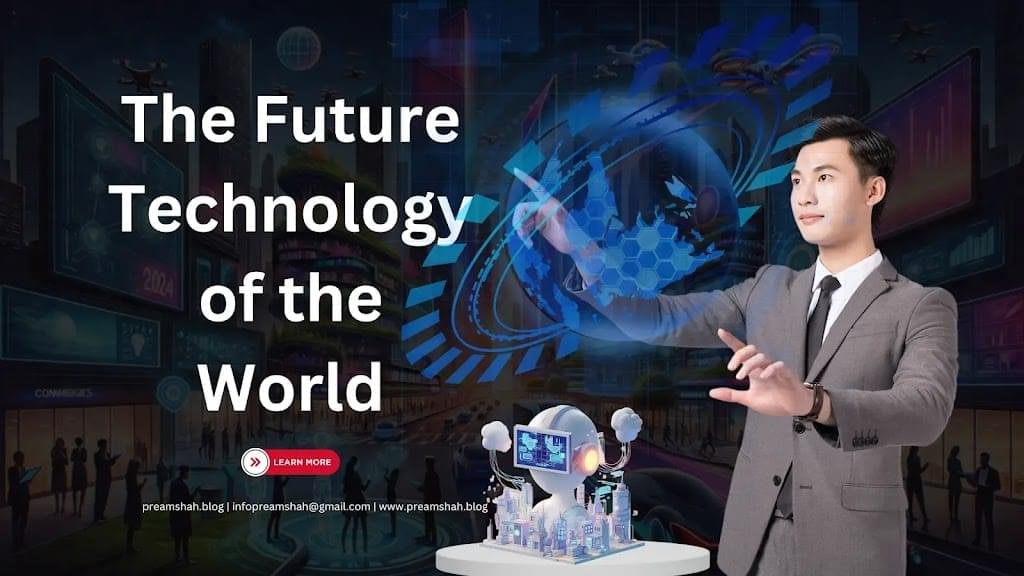The rapid advancements in technology are shaping our world in ways we could have never imagined. Innovations like artificial intelligence, 3D printing, and biotechnology are transforming industries, improving lives, and making the impossible possible. In this blog, we’ll explore some of the most exciting future technology ideas that are about to change the world forever.
1. Necrobotics: Bringing the Dead to Life
Necrobotics is an emerging field that uses deceased organisms to create robotic functions. Scientists at Rice University have successfully turned a dead spider into a robotic gripper by injecting air into its legs. This Frankenstein-like innovation could lead to more sustainable and bio-friendly robotic applications.
2. Sand Batteries: A New Era of Energy Storage
Finnish engineers have created sand batteries capable of storing renewable energy for long durations. These batteries use heated sand to store energy, which can then be distributed to provide warmth and electricity. This innovation has the potential to revolutionize energy storage and reduce our reliance on fossil fuels.
3. E-Skin: Hug Your Loved Ones From Afar
Engineers at the City University of Hong Kong have developed wireless soft e-skin that mimics human touch. This technology allows people to send tactile sensations over long distances, enhancing virtual interactions in online education, gaming, and even long-distance relationships.
4. Smelly VR: The Next Level of Immersion
Researchers are working on VR headsets equipped with scent-generating technology. These devices heat and melt odor-producing wax to create smells, making virtual reality experiences even more immersive. Soon, you’ll not only see and hear VR environments but also smell them.
5. Catapulting Satellites into Space
SpinLaunch is an innovative space technology company that uses kinetic energy instead of rocket fuel to send satellites into orbit. Their method reduces fuel consumption by 70%, making space exploration more sustainable and affordable.
6. Xenotransplantation: Pig Organs in Humans
The transplantation of pig organs into human bodies, known as xenotransplantation, is making significant strides. Scientists are modifying pig hearts through gene editing to make them compatible with human bodies, offering hope for thousands of patients awaiting organ transplants.
7. AI Image Generation: The Future of Art
Artificial intelligence is now capable of creating stunning artwork from simple text prompts. OpenAI’s DALL-E and Midjourney can generate hyper-realistic or abstract images in seconds, revolutionizing creative industries.
8. Brain-Reading Robots: Mind-Controlled Assistance
Scientists at the Swiss Federal Institute of Technology Lausanne (EPFL) have developed brain-reading robots that interpret human brain signals to perform tasks. This technology could enable tetraplegic patients to interact with the world in ways never before possible.
9. 3D-Printed Bones: A New Age of Medicine
10. 3D-Printed Food: Personalized Nutrition
Researchers at Columbia University have successfully created 3D-printed food, including a seven-layer cheesecake. This technology could revolutionize meal preparation, offering customized nutrition for individuals with specific dietary needs.
11. Boom-Free Supersonic Flights
12. Digital Twins: AI-Powered Health Tracking
Q Bio is developing digital twins—3D models of human bodies that can track changes over time. These models will help doctors detect diseases earlier and personalize medical treatments.
13. Direct Air Capture: Fighting Climate Change
Direct Air Capture (DAC) technology extracts carbon dioxide from the atmosphere and stores it underground. Though energy-intensive, future improvements could make it a game-changer for reversing climate change.
14. Green Funerals: Eco-Friendly Afterlife
Innovations in eco-friendly burials include human composting, fungal burial suits, and alkaline hydrolysis, significantly reducing the environmental impact of traditional funerals.
15. Energy-Storing Bricks: Houses That Power Themselves
Scientists at Washington University have developed energy-storing bricks that act as batteries. These smart bricks can store and release power, turning homes into self-sufficient energy sources.
16. Self-Healing Living Concrete
A team from the University of Colorado Boulder has developed living concrete that uses bacteria to repair itself. This could lead to buildings that last longer and require less maintenance.
17. Fuel from Thin Air: Hydrogen Production
Researchers at École Polytechnique Fédérale de Lausanne have created a device that extracts hydrogen fuel from moisture in the air. This technology could revolutionize clean energy production.
18. Internet for Everyone: Satellite-Powered Connectivity
Companies like Hiber and SpaceX’s Starlink are working on microsatellite-based internet solutions to provide global connectivity, ensuring that even remote areas have access to the web.
19. 3D-Printed Eye Tissue: The Future of Vision Care
The National Eye Institute in the U.S. has successfully printed retinal tissue using stem cells, offering potential treatments for age-related macular degeneration (AMD) and other vision impairments.
20. Car Batteries That Charge in 10 Minutes
Penn State University researchers have developed self-heating lithium-ion batteries that can fully charge in 10 minutes. This innovation could make electric vehicles more practical for daily use.
21. Artificial Neurons on Silicon Chips
Scientists have successfully integrated artificial neurons onto silicon chips, mimicking the electrical properties of real neurons. These could be used in medical implants for heart failure and neurodegenerative diseases.
22. The Road Ahead: What’s Next?
The technologies discussed here are just the beginning. As AI, biotechnology, and renewable energy continue to advance, our world will change in ways we can barely imagine. From self-repairing buildings to brain-controlled wheelchairs, the future is full of possibilities.
Stay tuned for more updates on groundbreaking innovations that will define the coming decades!
Final Thoughts
These technologies are set to revolutionize industries, improve human lives, and create a more sustainable future. Whether it’s AI-driven art, mind-reading robots, or self-healing buildings, the possibilities are endless. What excites you the most about the future of technology? Let us know in the comments below!

.webp)


.webp)
